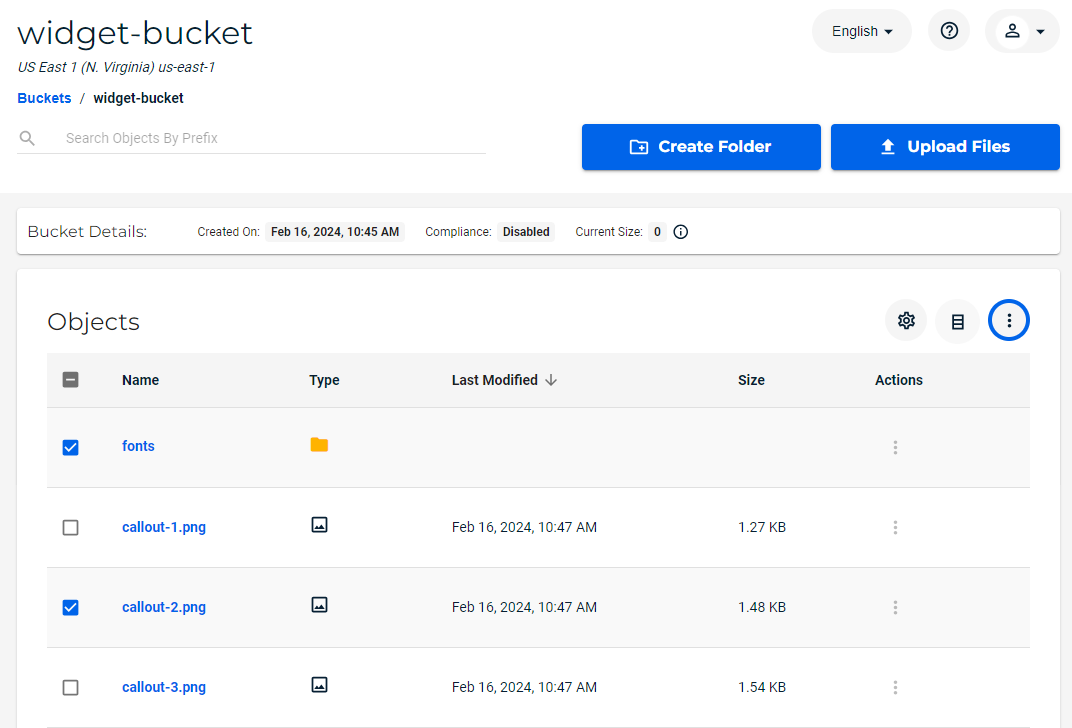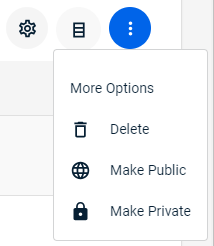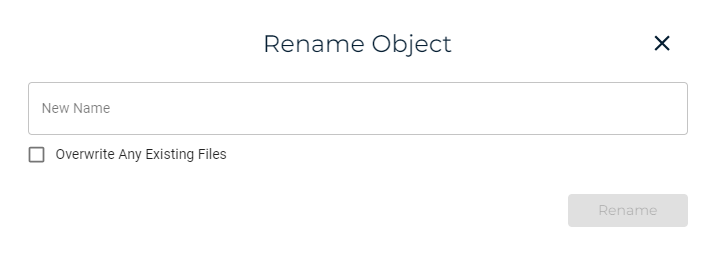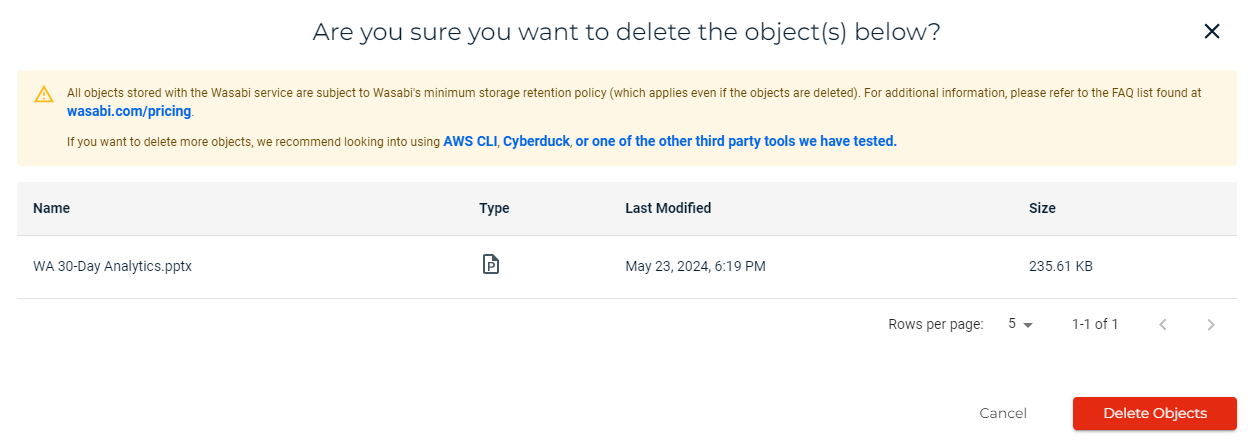Working With an Individual Folder
Click ![]() in the Actions column to the right of an individual folder name. These options are provided:
in the Actions column to the right of an individual folder name. These options are provided:

Each option is described in this article. (Refer to the contents listing to the right of your screen.)
Working With an Individual File
Click ![]() in the Actions column to the right of an individual file name. These options are provided:
in the Actions column to the right of an individual file name. These options are provided:

Each option is described in this article. (Refer to the contents listing to the right of your screen.)
Working With One or Multiple Folders and/or Files
You can select one or more folders and files, and then select actions to perform on those objects. Simply click  to the left of each folder or file. In this example, one folder (fonts) and one file (callout-2.png) are selected, as shown with
to the left of each folder or file. In this example, one folder (fonts) and one file (callout-2.png) are selected, as shown with  .
.

Now you can click the More Options icon ![]() to perform actions on the selected folder(s) and/or file(s):
to perform actions on the selected folder(s) and/or file(s):

The Delete option is available for folders and files.
Make Public and Make Private may be available, depending on your access.
Each option is described in this article. (Refer to the contents listing to the right of your screen.)
Renaming a File
You can change the name of an individual file.
Click
 in the Actions column to the right of an individual file name.
in the Actions column to the right of an individual file name.Select Rename.
Enter a new name for the file.

Avoid the use of the following special characters in a file name:
% (percent)
< (less than symbol)
> (greater than symbol)
\ (backslash) # (pound sign)
? (question mark)Certain file names may have non-ASCII characters that are 4 byte UTF8 characters (such as emojis). Wasabi does not support these characters and will return a 400 error message to an application that tries to write a file with 4 byte UTF characters in the file name. We recommend renaming the affected files, if possible.
Optionally, check the box to overwrite any existing file that uses the name to which you are renaming.
Click Rename.
Deleting a Folder(s) and/or File(s)
You can easily remove a folder(s) and/or file(s) (or all folders and files) from a bucket. All objects in a folder are deleted when the folder is deleted.
When you delete a folder or file, all objects stored with the Wasabi service are subject to Wasabi’s minimum storage policy, which applies even if the objects are deleted. For additional information, refer to Wasabi Pricing.
You cannot delete a folder or file from a compliance bucket.
To delete an individual folder or file, click
 in the Actions column to the right of the folder or file name.
in the Actions column to the right of the folder or file name.
OR: To delete multiple folders and/or files, click to select multiple objects. (Click
to select multiple objects. (Click  in the list header to select all objects.) Then, click
in the list header to select all objects.) Then, click  .
.Select Delete.
A message prompts you to confirm that you want to delete the object(s).

Click Delete Objects if you are sure you want to delete the object(s).
Wasabi calculates data every 24 hours when determining quota for buckets. If you attempt to free up quota space by deleting files, it may take up to 24 hours for that change to be effective in Wasabi and allow you to continue uploading data.
Downloading a File
You can download a stored file to your local computer.
Click
 in the Actions column to the right of an individual file name.
in the Actions column to the right of an individual file name.Select Download As.
You are prompted to enter a name for the file after it is downloaded. By default, the name of the stored file is displayed. Optionally, enter a new name.

Click Download. The file is downloaded to your local Downloads folder.
Sharing a File with a Presigned URL
A file does not need to be made public before you enable the presigned URL feature.
You can share an object for up to 12 hours or until your session expires. To share, you create a presigned URL, which uses security credentials and lets you grant time-limited permission to download the object through a browser or application.
Until the time-limited permission expires, anyone can access an object shared with a presigned URL—even if the bucket and object are private.
Click
 in the Actions column to the right of an individual file name.
in the Actions column to the right of an individual file name.Select Share with Presigned URL button to grant access to an object for a specific period of time.
Enter the number of hours and minutes for which the file will be shared.

Click Create Presigned URL.
A message shows the URL created for this object. Be sure to copy the URL before closing this window. Once this window is closed, you will not be able to copy the presigned URL again.

Click Close.
Adding File Tags
This feature is described in the Product Guide (Object Tags).
Making a File Public or Private
This feature is described in the Product Guide (Bucket and Object Access).